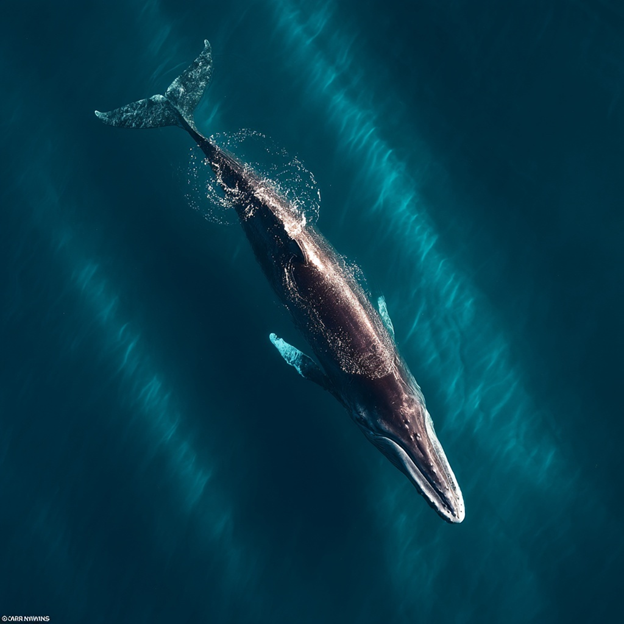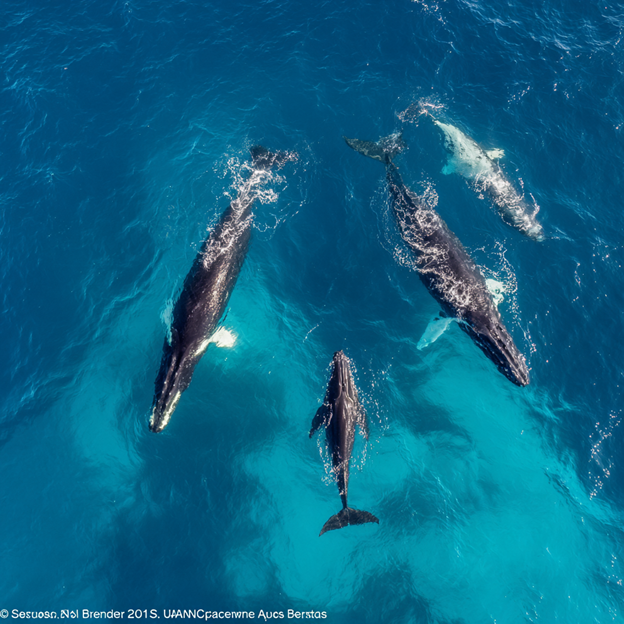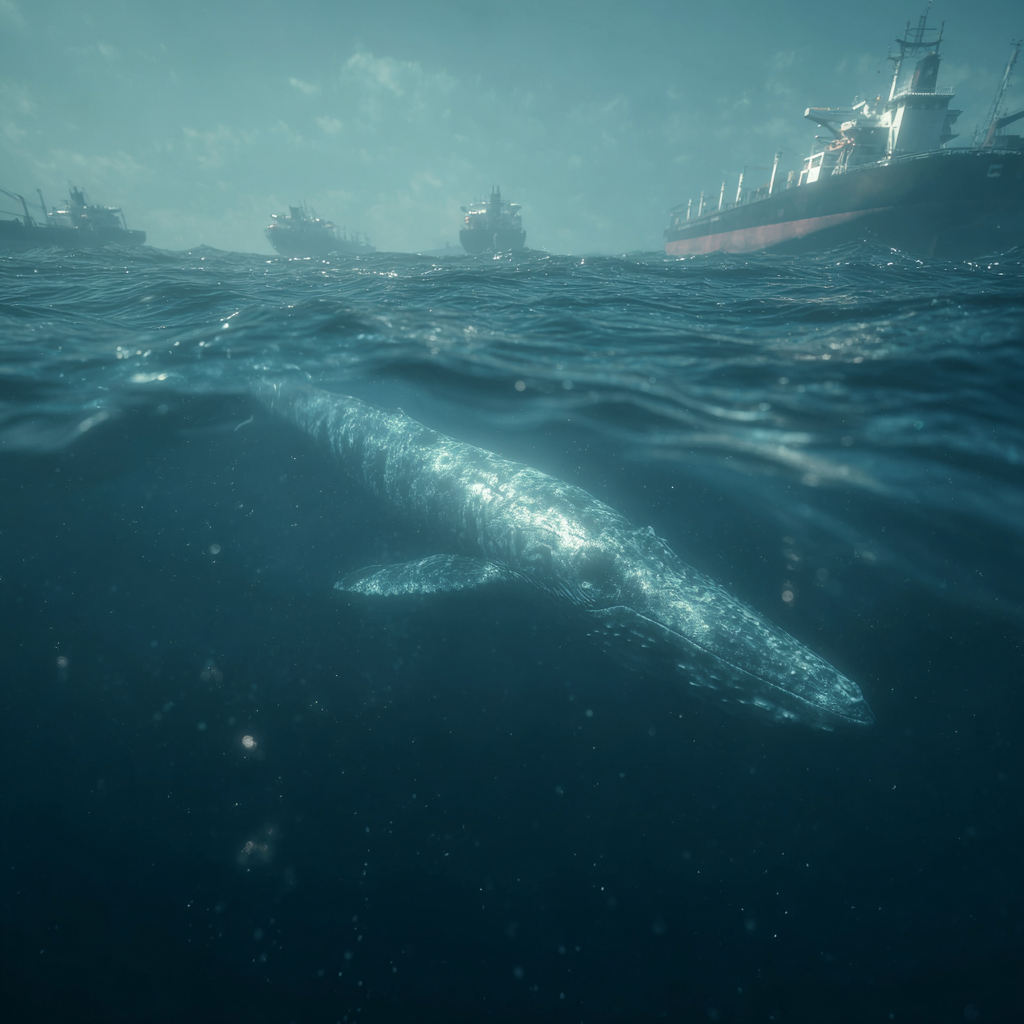In the vast, warm waters of the world's tropical seas lives a creature that, until very recently, was more myth than reality to the scientific community. The Omura's Whale, Balaenoptera omurai, is a true deep mystery, a "ghost whale" that existed for decades only as a collection of misidentified whaling specimens and skeletal remains. It was a species named before it was ever knowingly seen alive. Its story is not one of ancient folklore, but of the modern mythology of scientific discovery itself—a narrative that highlights the limits of Western science and the enduring secrets of the ocean. While scientists were puzzling over anomalous specimens, it is likely that local fishing cultures in its remote habitats lived alongside this creature, their own knowledge unrecorded. The journey of the Omura's whale from a footnote in whaling logs to a living, breathing animal is a powerful testament to how much of the deep ocean remains an undiscovered country.
I. Biological Snapshot: A Scientific Profile
Core Identification
- Scientific Name / Genus: Balaenoptera omurai, Genus Balaenoptera, Family Balaenopteridae
- IUCN Status: Data Deficient. Its rarity and the recent confirmation of its existence mean there is not enough information for a full conservation assessment.
Physical Characteristics
- Length: 9.6 to 12 meters (31.5 to 39 feet)
- Weight: Up to 20,000 kg (20 tonnes)
- Lifespan: Estimated at 38 years
- Distinguishing Features: A long, slender, and highly streamlined body, often described as snake-like. The coloration is strikingly asymmetrical, similar to a Fin Whale: the right lower jaw is white, while the left is dark. It has a single prominent ridge on its head, distinguishing it from the similar-looking Bryde's whale, which has three. As a rorqual, it has 80-90 throat pleats that expand during feeding.
Ecology & Distribution
- Global Population: Unknown. Sightings are too infrequent to make a reliable estimate.
- Distribution & Habitat: Found in tropical and warm-temperate waters in all ocean basins except the central and eastern Pacific. It is a predominantly coastal species, often found over the continental shelf.
- Diet & Foraging: A lunge-feeding baleen whale. Its diet is thought to consist mainly of krill and small, schooling fish.
- Reproduction: Very little is known. Unlike most other baleen whales, at least some populations appear to be non-migratory, suggesting they may not have a strictly limited breeding season. Mothers have been observed with young calves.

II. The Mythology of Scientific Discovery
The story of the Omura's whale is a modern myth about the process of discovery itself. For decades, this animal hid in plain sight. During Japanese scientific whaling operations in the 1970s, whalers occasionally caught what they believed to be a "pygmy" or "small form" of the Bryde's whale. These specimens were unusual, but they were cataloged and stored away. The whale was a ghost in the data, an anomaly without a name.
The first chapter of its "origin story" came in 2003. A team of Japanese scientists, led by Shiro Wada, Tadasu Yamada, and Masayuki Oishi, conducted a detailed genetic and morphological analysis of eight of these old whaling specimens, plus one that had stranded in the Sea of Japan. Their findings were stunning: this was not a small Bryde's whale, but an entirely new species, an ancient lineage that had diverged from the other rorquals millions of years ago. They named it Balaenoptera omurai in honor of the great Japanese cetologist Dr. Hideo Omura.
With this, a mythical creature was born into the scientific literature. It was a whale with a name, a genetic code, and a description based on dead bodies, but it had never been confirmed alive in the wild. For another decade, it remained a ghost, its ecology, behavior, and song completely unknown.
III. The First Encounter: From Ghost to Living Whale
The second chapter of the myth unfolded off the coast of Madagascar. In 2011, a research team led by Salvatore Cerchio was in the area studying dolphins. They began to encounter small rorqual whales that they, too, initially identified as Bryde's whales. But the more they saw them, the more they realized something was different. These whales had unique and striking asymmetrical markings, and their behavior didn't quite match what was known for Bryde's whales.
After two years of observations, the team managed to collect skin biopsies. The genetic results were the final, dramatic reveal: they were not watching Bryde's whales. They were in the presence of Omura's whales. In 2015, they published their findings, including the first-ever photographs and videos of a living Omura's whale. The ghost had finally materialized. This "discovery" electrified the marine biology community. Suddenly, whale watchers and researchers around the world knew what to look for, and sightings that had previously been dismissed or misidentified were re-evaluated. The number of confirmed locations for the species exploded, from just a few to nearly a hundred within a few years.
The Power of Recognition
For over a decade, Omura's whales swam through tropical waters, observed but unrecognized. The 2015 publication didn't create these whales—it gave scientists the eyes to see what was already there. This moment of recognition transformed understanding overnight, revealing that mysteries often persist not because they are hidden, but because we lack the knowledge to perceive them.

IV. The Unwritten Chapter: Indigenous Knowledge
The narrative of Western science "discovering" the Omura's whale in 2003 and again in 2015 highlights a recurring theme in natural history: the gap between scientific documentation and local, long-held knowledge. While the provided materials contain no specific accounts of Indigenous knowledge related to the Omura's whale—likely due to its rarity and its confusion with other species—the story of its "discovery" runs parallel to other, similar events.
A powerful example is the recent identification of Ramari's beaked whale (Mesoplodon eueu). For years, science considered beaked whales that washed ashore in New Zealand to be the known True's beaked whale. But Ramari Stewart, a renowned Māori Tohunga Tohorā (whale expert), recognized from her traditional knowledge that these animals were different. Her intuition, born from a deep cultural connection to the sea, was the catalyst for the scientific investigation that ultimately proved she was right, leading to the naming of a new species in her honor.
It is highly probable that in the small coastal communities of Madagascar, Indonesia, or the Philippines, local fishers had long recognized the Omura's whale as a distinct creature in their waters, with its own local name and story. For them, it was not a ghost waiting to be discovered, but a familiar, if rare, part of their marine world. The mythology of scientific discovery, in this light, is often a story of science catching up to knowledge that already exists, just in a different form.

V. Current Struggle: A Rare Whale in a Crowded Ocean
The Omura's whale's recent emergence into the scientific spotlight has immediately highlighted its vulnerability. As a species that seems to prefer coastal, tropical waters, it lives at the intersection of high biodiversity and intense human activity.
| Primary Threat | Direct Impact | Ultimate Consequence |
|---|---|---|
| Ship Strikes | Collisions with commercial and recreational vessels in busy coastal shipping lanes. | Direct, unnatural mortality. Causes severe injury and death—a significant threat for a species with a likely small population. |
| Fisheries Bycatch & Entanglement | Accidental capture in various types of fishing gear. | Direct mortality. Leads to drowning, injury, and starvation. |
| Underwater Noise Pollution | Disruption from seismic surveys for oil and gas, shipping, and coastal construction. | Impaired communication, foraging, and potential abandonment of key habitats. Masks the low-frequency songs used for communication; causes stress and displacement. |
| Habitat Degradation | Pollution and physical destruction of coastal habitats from industrial development. | Long-term decline in health and reproductive success. Reduces prey availability and degrades the overall health of the ecosystem. |
The Race Against Anonymity
The greatest struggle for the Omura's whale is its anonymity. Because so little is known, it is listed as Data Deficient by the IUCN. This lack of data makes it impossible to design effective conservation plans. The evidence that it may exist in small, isolated, non-migratory populations makes it exceptionally vulnerable. A single threat, like a new shipping lane or an oil exploration project in a key habitat, could have a devastating impact on a local population before science even has a chance to fully understand it. The race is now on to fill in the missing chapters of this whale's story before its final chapter is written by human pressures.
References
- "Omura's whale much more widespread across the globe than previously thought." Mongabay, April 2019.
- "The Omura's Whale: Exploring the Enigma." ResearchGate.
- "First glimpse of Omura, the mythical songstress." The New Daily, November 2, 2015.
- "A New Whale Species Is Discovered in the Wild." Woods Hole Oceanographic Institution.
- "Omura's whale." Wikipedia.
- "Omura's Whale." Save The Whales.
- "Omura's whale." Whale & Dolphin Conservation USA.
- "Balaenoptera omurai." Animal Diversity Web.
- "Omura's Whale - Facts, Diet, Habitat & Pictures." Animalia.bio.
- "Mini Report: Rare Omura's whale documented at the Raja Ampat project!" Indo Ocean Project.
- "Distribution and Seasonality of the Omura's Whale (Balaenoptera omurai) in Australia Based on Passive Acoustic Recordings." PubMed Central.
- "Tohunga Tohorā's Intuition Reveals New Whale Species." Smithsonian Ocean.